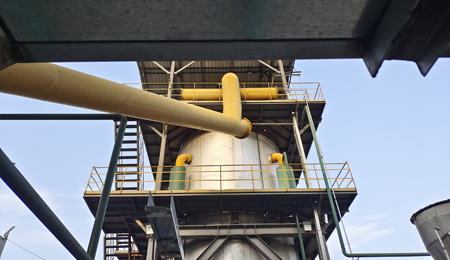Municipal Solid Waste Gasification for Power Generation
In this era of pursuing sustainable development, the disposal of increasing amounts of solid waste has become a common issue around the world. Today, we are pleased to share with you our solid waste-to-energy project, which will be officially commissioned in November 2020, and witness how it will transform waste into green power, contributing to a sustainable future.
The 25,228 ㎡ project is capable of processing up to 300 t of solid waste per day and a staggering 100,000 tonnes per year. This amazing waste treatment capacity has greatly reduced the pressure on local waste disposal.
It is particularly worth mentioning that the project has made great efforts in flue gas purification. SNCR denitrification, semi-dry deacidification, activated carbon adsorption, bag filter and wet deacidification and a series of advanced processes to ensure that the emission of flue gas indicators are better than the current national standards.
Project Overview
The 25,228 ㎡ project is capable of processing up to 300 t of solid waste per day and a staggering 100,000 tonnes per year. This amazing waste treatment capacity has greatly reduced the pressure on local waste disposal.
Project Configuration
The core of the project lies in its advanced equipment configuration and technological innovation. Two 150t/d pyrolysis gasifiers are used as the core equipment, together with a highly efficient secondary combustion chamber, to achieve full combustion and gasification of the waste at high temperatures, effectively extracting the heat energy from the waste. Subsequently, this thermal energy is converted into steam through a waste heat boiler, which drives a generator set to generate electricity, achieving efficient conversion of energy.It is particularly worth mentioning that the project has made great efforts in flue gas purification. SNCR denitrification, semi-dry deacidification, activated carbon adsorption, bag filter and wet deacidification and a series of advanced processes to ensure that the emission of flue gas indicators are better than the current national standards.



.jpg)

